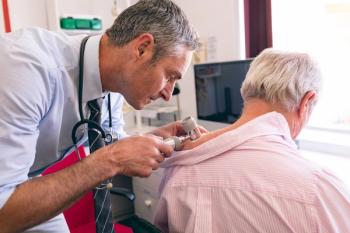
Cost and Infrastructure Slow Cardiac PET Adoption: Merrill Stewart, MD

Merrill H. Stewart, MD, Ochsner Health, outlines the financial, logistical, and reimbursement barriers slowing the adoption of cardiac stress testing, but growing recognition of its long-term value could drive wider use.
Captions were auto-generated.
Despite offering superior accuracy in detecting
Stewart told The American Journal of Managed Care® (AJMC®) that the high capital investment required to implement PET stress testing remains the main barrier. “The scanners cost up to a million dollars,” he said, “and it can cost a million dollars just to retrofit a facility with the shielding that involves a cardiac PET/CT.”
Because of this, PET imaging is often limited to large hospital systems or academic medical centers that can justify the upfront investment. “A lot of private practice cardiologists don’t have $2 million to put up for installing one of these cameras,” Stewart said. As a result, smaller practices tend to rely on more affordable—and less precise—stress testing options.
But the long-term value of cardiac PET is becoming harder to ignore, according to Stewart. The cameras have resulted in less downstream testing, leading to fewer false positives, fewer unnecessary catheters or stents, and fewer bypass procedures. Not only does this prevent patients from undergoing and paying for unnecessary treatments, but it keeps long-term costs lower for payers too.
“As opposed to paying for the cheaper stress test, where it costs less for the insurer, you end up getting a higher false positive rate, and so you end up getting more catheters, more stents, and more bypasses, some of which may be unnecessary,” Stewart told AJMC. “The total cost to the insurer is probably greater just to pay for the cheaper, noninvasive stress testing modality, as opposed to the more expensive stress testing modality that stops more people at the door, if you will, and doesn't result in more downstream testing.”
Another barrier is the cost of radioisotopes used in PET imaging. Many PET systems require an on-site generator to produce radiotracers, which adds to the operating cost and limits scalability. However, the FDA-approved radiotracer flurpiridaz (Flyrcado; GE HealthCare) could alleviate some of these constraints, especially for patients with lower volumes that don’t need a generator.
Newsletter
Stay ahead of policy, cost, and value—subscribe to AJMC for expert insights at the intersection of clinical care and health economics.













































